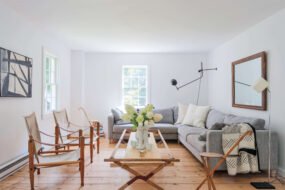

Introduction
As people live longer, healthier lives, the desire to remain in one’s own home well into old age—known as “aging in place”—has grown significantly. For many, the idea of retaining independence, comfort, and familiarity is far more appealing than relocating to assisted living facilities. However, the typical home may not be suited for the physical, sensory, and cognitive changes that come with aging.
This comprehensive guide will walk you through the key elements of aging in place remodeling, offering tips and design strategies to make any home safer, more functional, and more comfortable for aging residents.
Why Aging in Place Matters
Aging in place isn’t just a trend—it’s a lifestyle choice that allows individuals to retain their dignity and autonomy. According to AARP, nearly 90% of seniors want to stay in their own homes as they age. With the right modifications, this is not only possible but ideal for many families.
Key reasons people choose to age in place:
Emotional well-being: Staying in a familiar space improves mental health.
Financial savings: Avoiding long-term care facilities can be cost-effective.
Family connectivity: Aging at home allows for multi-generational living.
Quality of life: Personal routines, pets, and comfort can be preserved.
Core Principles of Aging-in-Place Design
Successful aging-in-place remodeling follows universal design principles—design that works for people of all ages and abilities.
1. Safety First
Falls are a leading cause of injury for older adults. Design elements must address this risk:
Non-slip flooring
Grab bars in bathrooms
Stair lifts or ramp access
Zero-threshold showers
2. Accessibility
Mobility aids like walkers or wheelchairs require space and thoughtful layout:
Widened doorways (minimum 36 inches)
Lowered countertops
Lever-style door handles
Open floor plans to allow easy movement
3. Comfort and Livability
Bright, natural lighting for better visibility
Climate control systems for temperature sensitivity
Quiet appliances and soundproofing for peace
4. Adaptability
Design should anticipate future changes in ability:
Blocking behind walls for future grab bar installation
Removable lower cabinetry in kitchens
Adjustable-height countertops and sinks
Room-by-Room Remodeling Strategies
1. Entryways & Hallways
Install ramps or no-step entries
Ensure lighting is automatic or motion-sensing
Add handrails on both sides of stairs
Use slip-resistant flooring like rubber, cork, or textured vinyl
2. Living Room
Remove rugs and tripping hazards
Use furniture with firm cushions and armrests for ease of movement
Install rocker switches and dimmable lighting
Add outlets at waist height for easy access
3. Kitchen
Use pull-out shelves and drawers
Lower upper cabinets or install pull-down racks
Use appliances with large, easy-to-read controls
Induction cooktops to prevent burns
4. Bathroom
Walk-in tubs or curbless showers
Wall-mounted sinks for wheelchair users
Comfort-height toilets
Emergency pull cords or panic buttons
5. Bedroom
Bed at proper height for ease of entry/exit
Smart lighting with voice or touch control
Closet organization with pull-down rods
Consider adding a secondary bedroom or bathroom on the main floor
Smart Home Technology for Aging in Place
Tech innovations have become powerful tools for independent living:
Voice assistants (Alexa, Google Home) for lights, calls, reminders
Video doorbells to see visitors without getting up
Smart thermostats for energy-efficient comfort
Fall detection systems and medical alert devices
Security systems with remote monitoring for caregivers
Outdoor Considerations
Don’t forget to make outdoor spaces safe and accessible too:
Install motion-sensor lights along walkways
Use raised garden beds for easier reach
Choose slip-resistant decking
Ensure entryways are weather-protected
Multi-Generational Home Design
With more families choosing to live under one roof, aging-in-place renovations often include:
In-law suites with separate entrances
Shared kitchens or dining areas
Dual master bedrooms
Privacy partitions
This approach supports intergenerational bonding while giving aging parents autonomy.
Budgeting and Planning
Aging-in-place remodeling can range from minor updates to full-scale renovations. Here’s how to plan:
Set Priorities
Start with safety essentials (bathroom, lighting, flooring)
Follow with accessibility upgrades (doorways, kitchens)
Seek Funding Support
Medicaid home modification programs
Veterans’ Affairs housing grants
Nonprofits like Rebuilding Together
Hire the Right Pros
Certified Aging-in-Place Specialists (CAPS)
Occupational therapists for home assessments
General contractors with experience in universal design
Recent Posts
- 🌿 Eco-Friendly Holiday Celebrations: 10 Sustainable Ways to Make the Season Special
- Cozy Holidays at Home: 10 Creative Ways to Make This Season Magical Without Traveling
- DIY Holiday Bliss: Easy Projects to Make Your Home Cozy, Warm & Festive
- Holiday Glow-Up: Simple DIY Projects to Transform Your Home into a Festive Wonderland
- The Ultimate DIY Home Remodeling Guide: 30 Transformations You Can Do Without Hiring a Professional
Recent Comments
Categories
- Blog
- Budget-Friendly DIY
- Careers
- Crafts and Hobbies
- Decor and Design
- Design
- Featured Post
- Holiday and Special Occasion Projects
- Home Improvements
- Home remodeling
- Innovation
- Inspiration and Ideas
- Lifestyle
- Outdoor Projects
- Step-by-Step Tutorials
- Technology
- Tips and Tricks
- Tools and Materials
- Travel
- Uncategorised
Search
Recent Post
🌿 Eco-Friendly Holiday Celebrations: 10 Sustainable Ways
- 29 November 2025
- 6 min read
Cozy Holidays at Home: 10 Creative Ways
- 29 November 2025
- 3 min read
DIY Holiday Bliss: Easy Projects to Make
- 28 November 2025
- 6 min read






